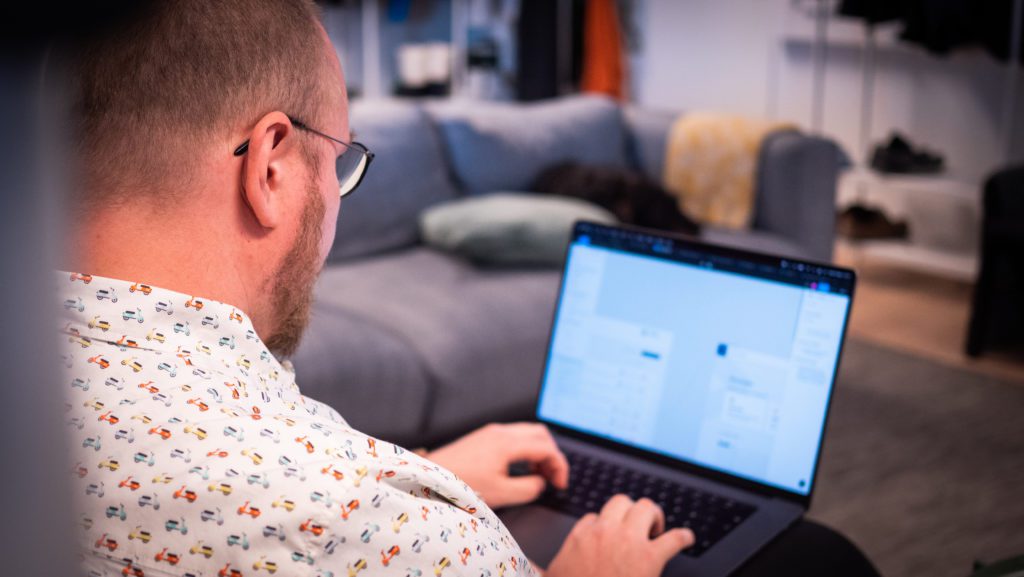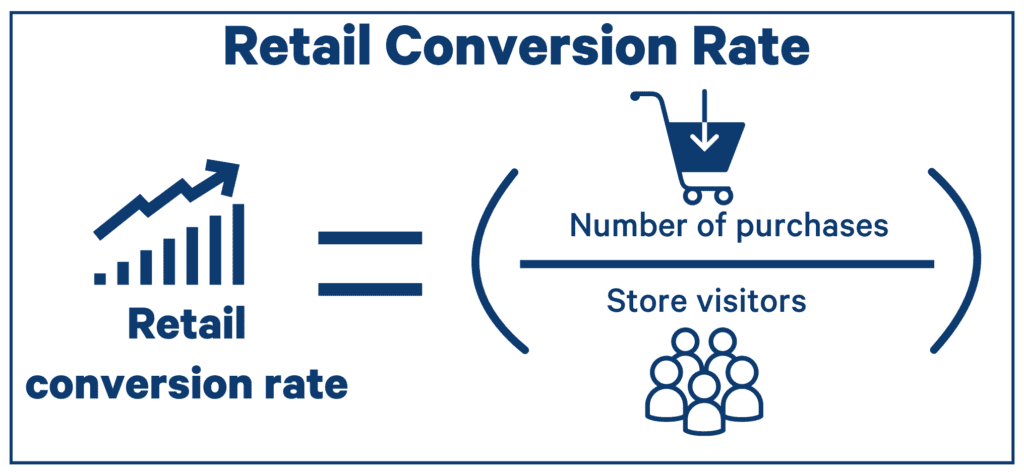Measuring Retail Conversion Rate

Measuring retail conversion rates of physical stores is just as important as measuring
Having a brick and mortar store is such a huge investment that you'll need to make sure they're bringing in the as much money in as possible.
That's where optimizing
Measuring Retail Conversion Rate
When you track and measure retail conversion rates effectively, you can
- Gain a lot of critical insights into customer behavior,
- Learn how your store operates and
- See where you need to make targeted improvements.
Before we get into how to measure the conversion rate in retail, and how you can improve it, first, let’s answer the question of what it actually is.
Key Terms Related to Retail Conversion Rate
Let's go over a few central concepts related to retail conversion rate.
Foot Traffic
Foot traffic quite literally refers to the number of people walking into your physical store. You can set up an automated foot traffic counter for this purpose.
Everyone aims for heavy foot traffic, but for some, that's just not possible. If your daily visitor numbers aren't that high, don't worry. We'll go over a few ways to lure in potential customers.
Customer Experience
Customer experience plays a central role in increasing the number of sales. The term refers to how people feel they were treated at your store.
The following aspects influence the in-store customer experience:
- Queue lengths
- Behavior of staff members
- Store layout
- Easiness of finding what they wanted
- Visuals of the store
- Background music
- Level of background music
- Cleanliness
- Free samples or refreshments offered
- Accepted payment methods
To get a better customer experience, you'll need to nail down most if not all of the aforementioned aspects.
Retail Conversion Rate
To put it very simply, the retail conversion rate is a measure of how many people that came to your store actually bought something.
It's usually stated as a percentage.
Retail Conversion Rate Formula
Calculating the conversion rate for your store is easy.
Take the number of store visitors within a period and divide it by the number of purchases made during that period. Then multiply it by a hundred to get the percentage.
So, if 1,000 people visit your store in a single day, and 100 of them bought something, you’d have a conversion rate of 10%. (100/1000 x 100% = 10%)

Today we’re going to run you through step by step how to measure your conversion rate, and how you can use it to make improvements to your business.
1. Set a realistic starting point
The conversion rate in retail will be different depending on the type of store you operate and your location. For example, a local convenience store might see conversion rates as high as 95%, while a luxury, boutique jewelry store will be much lower.
So we’d recommend doing a little research before you start to measure your own conversion rate. Find out what kind of rates are the average in your industry and use it as your baseline to work from.
If you work in a very niche industry with no benchmarking data available, you might want to record your conversion rate over the course of a week to give you a number to improve on.
2. Count the number of people coming into the store
If you run a small store that doesn’t receive a lot of customers, you can do this the old fashioned way, with simple pen and paper. But, getting an accurate count can be quite difficult for larger stores. Many retailers don’t want to assign a staff member to the door to manually count customers, so many are turning to technology.
Luckily, we’ve seen great improvements in tracking technology in recent years. They range from basic sensors that count the number of people entering your store, to more complex cameras and optical sensors that track additional movements
One interesting piece of tech even allows you to track customers by the signal strength on their mobile devices. This is less intrusive than a camera and shows you which direction people take in your store, where they spend the most time and which displays they stop next to.
Whichever method you use to track customer numbers, try to eliminate sales staff, customer’s partners and children of your customers to give you a more accurate count.
3. Calculate the average transaction value
Conversion rate in retail goes hand in hand with your average transaction value. Start by calculating the total number of purchases during the day, then measure the average cost of each purchase. If you can improve your conversion rate you’ll see a significant boost in sales.
If you have a large department store where customers might make different purchases from different checkouts, try to track them via purchases made with a credit card so you don’t skew your numbers.
4. Complete a deeper analysis of customer behaviour
It’s not enough to just measure the number of customers and how much they spend though. The more you can analyze customer behavior, the more likely you are to increase your conversion rate. Some common methods include:
- Record how long people are looking at displays and kiosks - If people are ignoring them, then change things up. If a display is proving popular, try and replicate it
- Monitor footfall patterns to plan for busy times - Find out which are your busiest days and times, then schedule more staff to cover these periods. If your customers are being served quickly, this is a great way to increase conversion rates
- Monitor lines and waiting times - Shoppers won’t join a long line, and those waiting for too long are likely to ditch waiting altogether, meaning lost sales for you. You can then assign staff more effectively to reduce queue lengths
- Track the path customers take through the store - Which products are customers gravitating towards? Which parts of the store are they ignoring? Make it easy for your customers to find what they’re looking for and try to improve areas they’re not interested in
5. Monitor the impact of advertising campaigns
Once you have an accurate conversion rate in retail, you can use this as a benchmark to test the effectiveness of your advertising campaigns. Record your benchmark conversion rate before you start your new campaign, then compare it to the figures you get once it’s started. Did your footfall and conversion rate increase? If not then it means your advertising might not be effective.
Don’t forget to use the other methods of analysis mentioned in point 4 in conjunction with your conversion rate too. Maybe your advertising campaign was successful, but people were put off by long lines or the fact that your top products sold out quickly?
6. Tips to improve retail conversion rate
While it’s important to measure conversion rates and track customer behavior, there are a few tips and tricks you can implement right now to help improve your conversion rate too.
- Keep your store clean and organized - When customers can find products quickly and easily, your conversion rates will go up, so make sure you have clear signage
- Add customer reviews to product displays - Putting up reviews next to displays and products can often help increase your conversion rate. Always ask your customers if it’s OK to display their review though
- Let people try the product - This is still the greatest advantage a bricks and mortar store has over the online shopping competition. Demo your products and let the customer try them out before they buy and you’ll see conversion rates climb
- Give mystery discounts - To create excitement, place QR codes at various locations inside the store. Scanning these codes will lead customers to a page where they will see the mystery discount they have won. QR codes are easy to use and can be created using any of the best QR code generators.
Final thoughts
The conversion rate in retail isn't an exact science. Your customers are individuals, and it’s difficult to consistently predict human behavior.
However, if you have accurate customer numbers and conversion rates, and have a detailed analysis on how your customers are spending time in your store, you’ll be able to start taking steps to improve your conversion rate today.
